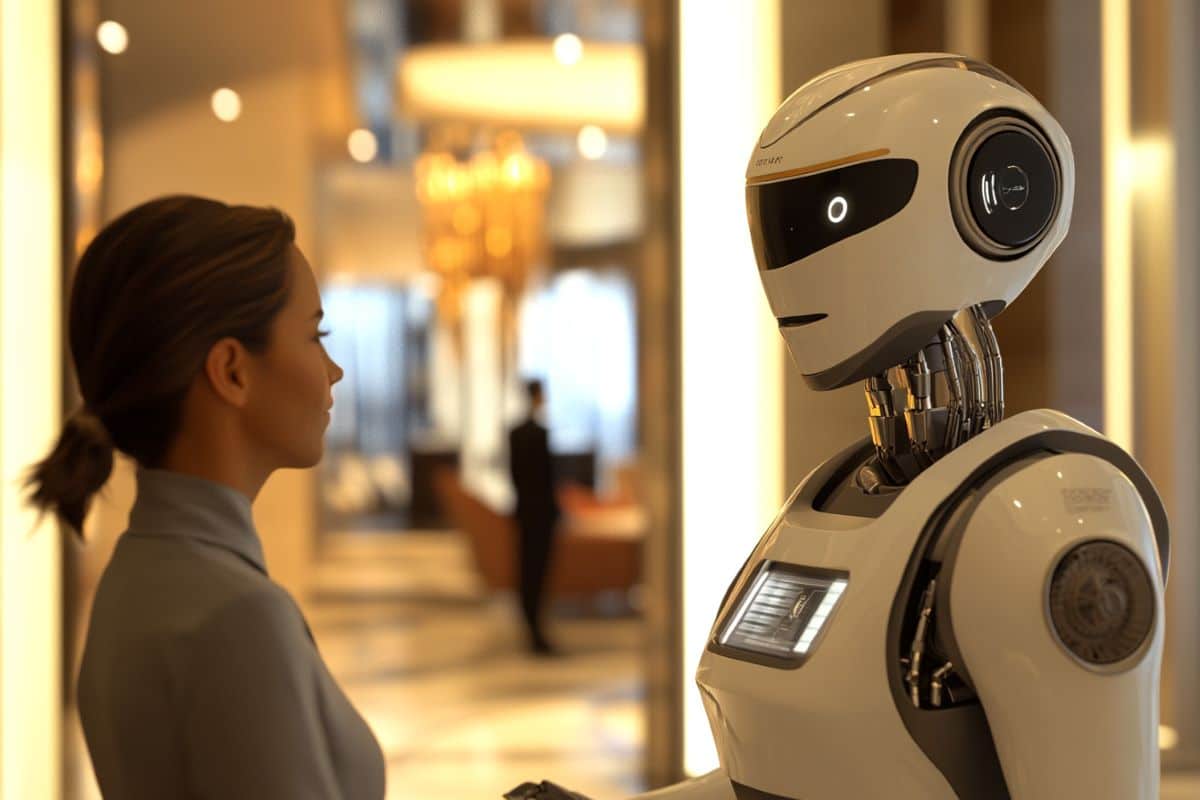Summary: Researchers have developed a new scale to measure how human-like robots appear, identifying four key qualities: appearance, emotional capacity, social intelligence, and self-understanding. Robots lacking any of these traits risk being perceived as cold or unsettling, limiting their usefulness in customer service.
The study shows that people evaluate robots similarly to how they assess humans—by combining physical and social traits. This tool can guide the design of robots that are more approachable and effective in settings like hotels and airports.
Key Facts:
- Four Key Traits: Human-like appearance, emotional capacity, social intelligence, and self-understanding are critical for robots to seem lifelike.
- Self-Understanding Gaps: Robots often score lowest in perceived self-understanding, the sense of an inner life or personality.
- Design Implications: The scale provides a roadmap for creating robots better suited for social and customer service roles.
Source: University of Florida
Better, faster artificial intelligence is fueling a rise in human-like robots for customer service at places like hotels and airports, especially in areas outside the U.S. But many robots still fail to connect with people, instead creeping us out with fake smiles and jittery movements.
Now, a new measurement scale created by hospitality researchers reveals the four qualities that robots must exhibit to seem lifelike: human-like appearance, emotional capacity, social intelligence and self-understanding.

Missing any of these four makes robots feel cold and alien, which limits how they can be used.
The scale can help companies and engineers quantify how lifelike their robots are in a way that can guide the development of better, more approachable robots for the service industry.
“Before we fully utilize AI technology, we should understand how people perceive it. But there hasn’t been any agreed-upon understanding of how people perceive the human likeness of robots,” said Hengxuan “Oscar” Chi, Ph.D., a professor of hospitality at the University of Florida and lead author of the new study.
With colleagues at Washington State University, Chi asked hundreds of people to evaluate the human qualities of a series of robots that ranged from tabletop, metal-clad gizmos to full-sized, lifelike robots with faces and imitation skin and hair.
The surveys revealed that people judge robots the same way they judge other humans, based on a combination of both physical and social traits, such as the ability to read and respond appropriately to somebody’s emotions.
“Some manufacturers have focused too much on creating a human-like body but not the other three parts of the scale. Based on our study, you can’t ignore those other elements,” Chi said.
Often the lowest score robots received was in the element of self-understanding, the perception that the robot has an inner life, a real personality, or “spirit.” This spirit may be the hardest for engineers to simulate in robots, but it is an essential element to make robots more approachable and useful.
“Understanding how we perceive robots is not just a technological question, but a sociological one,” Chi said. “It’s about bridging the gap between human and machine.”
About this robotics research news
Author: Eric Hamilton
Source: University of Florida
Contact: Eric Hamilton – University of Florida
Image: The image is credited to Neuroscience News
Original Research: Closed access.
“Seeing Personhood in Machines: Conceptualizing Anthropomorphism of Social Robots” by Hengxuan “Oscar” Chi et al. Journal of Service Research
Abstract
Seeing Personhood in Machines: Conceptualizing Anthropomorphism of Social Robots
This study conceptualizes and develops a multi-dimensional Scale of Social Robot Anthropomorphism (SSRA).
Through a rigorous scale development procedure that consists of a battery of qualitative (interviews and focus group) and quantitative approaches (online and field studies), four dimensions of social robot anthropomorphism are identified, namely, human-like appearance, social intelligence, emotional capacity, and self-understanding.
The scale is found to be valid and reliable by testing its convergent, discriminant, and nomological validities, utilizing data collected from over 1,000 participants.
The theoretical and managerial contributions are discussed, and future research recommendations are provided.







